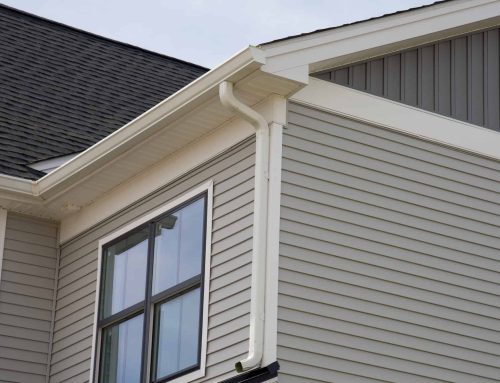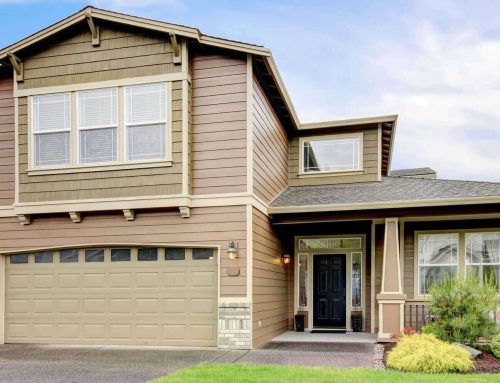When it comes to protecting and beautifying your home’s exterior, few decisions carry as much weight as choosing the right siding material. Vinyl siding has dominated the North American housing market for decades, adorning millions of homes from coast to coast. But is this popular choice the right fit for your property? Like any building material, vinyl siding comes with its own set of advantages and limitations that every homeowner should understand before making an investment. Whether you’re planning a complete siding replacement or building a new home, understanding the full picture will help you make an informed decision that serves your needs for years to come.
Understanding Vinyl Siding in the Toronto Context
Vinyl siding is a plastic exterior cladding made from polyvinyl chloride (PVC) resin. First introduced in the late 1950s, it has evolved significantly over the decades, with modern formulations offering improved durability, color retention, and aesthetic appeal. In the Greater Toronto Area, vinyl siding remains one of the most common choices for residential properties, and for good reason—Toronto’s climate presents unique challenges that make certain siding characteristics particularly valuable.
The GTA experiences significant temperature fluctuations throughout the year, from sweltering summers that can reach above 30°C to harsh winters with temperatures plummeting well below -20°C. This extreme range, combined with frequent freeze-thaw cycles in spring and fall, puts considerable stress on any exterior building material. Understanding how vinyl siding performs in these conditions is essential for Toronto homeowners considering this option.
The Advantages of Vinyl Siding
Cost-Effectiveness
One of vinyl siding’s most compelling advantages is its affordability. When compared to other siding materials, vinyl typically costs significantly less both in material and installation expenses. For Toronto homeowners working within a budget, this can make the difference between a complete exterior renovation and a patchwork repair approach. The lower upfront cost doesn’t just benefit your wallet today—it also means that if damage occurs to a section of your home, replacement panels are relatively inexpensive and readily available throughout the GTA.
Low Maintenance Requirements
Toronto homeowners lead busy lives, and the last thing many want is a high-maintenance exterior. Vinyl siding excels in this area. Unlike wood siding that requires regular painting, staining, or sealing, vinyl maintains its appearance with nothing more than an occasional wash with a garden hose and mild soap. There’s no scraping, no repainting every few years, and no worrying about rot or insect damage. In a climate where harsh winters can make exterior maintenance particularly challenging, this convenience factor cannot be overstated.
Moisture Resistance
The GTA receives an average of 830mm of precipitation annually, with rain, snow, and ice putting constant pressure on home exteriors. Vinyl siding’s inherent moisture resistance makes it well-suited to handle Toronto’s wet conditions. The material doesn’t absorb water, which means it won’t rot, warp, or deteriorate from moisture exposure the way wood siding can. This characteristic is particularly valuable in preventing the mold and mildew growth that can plague homes in humid summer months.
Wide Range of Styles and Colors
Modern vinyl siding offers an impressive variety of styles, textures, and colors. Homeowners can choose from designs that mimic wood grain, cedar shakes, or smooth contemporary finishes. Color options range from classic whites and neutrals to bold architectural statements. For Toronto’s diverse neighborhoods—from the Victorian homes of Cabbagetown to the modern builds in Liberty Village—there’s a vinyl siding style to complement virtually any architectural aesthetic.
Energy Efficiency Options
Insulated vinyl siding has become increasingly popular in the Toronto market, and for good reason. With foam backing added to standard vinyl panels, insulated siding can improve your home’s thermal performance, helping to reduce heating costs during Toronto’s long winters and cooling expenses during summer heat waves. While the energy savings may be modest compared to upgrading insulation in walls and attics, every bit helps when managing GTA energy bills.
The Drawbacks of Vinyl Siding
Performance in Extreme Temperatures
While vinyl siding handles Toronto’s moisture well, extreme temperatures present challenges. In severe cold, vinyl can become brittle and crack more easily if impacted. This is particularly relevant during winter months when snow removal equipment or falling ice might strike siding panels. Conversely, during heat waves, vinyl can warp or buckle if not properly installed with adequate expansion gaps. Toronto’s wide temperature swings mean that installation quality is absolutely critical—improper installation that doesn’t account for expansion and contraction can lead to problems down the road.
Susceptibility to Impact Damage
Vinyl siding is more prone to cracking and denting than some alternatives. A well-hit baseball, hail storm, or even aggressive power washing can cause damage. While individual panels can be replaced, color matching can be problematic if your siding has faded over time. Toronto’s unpredictable weather, including occasional severe thunderstorms with hail, makes this vulnerability worth considering.
Environmental and Sustainability Concerns
For environmentally conscious Toronto homeowners, vinyl siding presents some concerns. The manufacturing process involves petroleum products and produces emissions. When vinyl siding reaches the end of its lifespan, it’s not readily biodegradable, and recycling programs for old vinyl siding are limited in the GTA. As Toronto continues to prioritize sustainability and green building practices, this consideration has become increasingly important for many property owners.
Color Fading
Despite improvements in UV-resistant formulations, vinyl siding will fade over time, especially on south and west-facing walls that receive the most intense sunlight. In Toronto’s climate, with significant sun exposure during long summer days, this fading is inevitable. While quality vinyl siding now comes with warranties against excessive fading, the reality is that your siding won’t look exactly the same in 15 years as it does on installation day. Darker colors tend to fade more noticeably than lighter shades.
Potential Impact on Resale Value
While vinyl siding won’t necessarily hurt your home’s value, it may not add as much value as premium siding materials in certain Toronto neighborhoods. In upscale areas where architectural authenticity and premium materials are valued, vinyl might not deliver the same return on investment as materials like fiber cement or high-quality wood. The perception of vinyl as a “budget” option persists in some real estate markets, even as quality has improved dramatically.
Exploring Alternative Siding Options
Fiber Cement Siding
Fiber cement siding has gained considerable traction in the Toronto market, and many siding contractors now recommend it as a premium alternative to vinyl. Composed of cement, sand, and cellulose fibers, fiber cement offers exceptional durability and can withstand Toronto’s harsh climate conditions without warping, cracking, or buckling. It’s highly resistant to fire, insects, and rot, and it holds paint extremely well.
The primary advantages of fiber cement include its longevity (often lasting 50+ years), superior impact resistance, and authentic wood-like appearance. It performs exceptionally well in freeze-thaw cycles that characterize Toronto springs and falls. However, fiber cement comes with a significantly higher price tag than vinyl—both in materials and installation costs. It’s also heavier, requiring more robust installation, and it will need repainting every 10-15 years, unlike vinyl’s maintenance-free color.
Natural Wood Siding
Wood siding offers unmatched natural beauty and authentic character that appeals to many Toronto homeowners, particularly those with heritage properties in neighborhoods like the Annex or Rosedale. Cedar and redwood are popular choices due to their natural resistance to decay and insects. Wood siding can be stained or painted in any color, and it can be repaired easily when damaged.
The drawbacks of wood siding in Toronto’s climate are considerable. Wood requires regular maintenance—staining or painting every 3-7 years depending on exposure and product quality. It’s susceptible to moisture damage, insect infestation, and rot if not properly maintained. Toronto’s climate, with its humidity and precipitation, makes wood siding a higher-maintenance choice. The initial cost is also higher than vinyl, and ongoing maintenance costs add up over the siding’s lifespan.
Engineered Wood Siding
Engineered wood siding products offer a middle ground between natural wood and vinyl. Made from wood fibers, strands, or flakes combined with resins and binders, engineered wood provides a wood-like appearance at a lower cost than solid wood. Modern engineered wood products have improved significantly in terms of moisture resistance and durability.
For Toronto homeowners, engineered wood can be an attractive option—it’s more affordable than solid wood and fiber cement, yet offers better aesthetic appeal than vinyl for those seeking a wood look. However, it requires more maintenance than vinyl (periodic painting is necessary), and quality varies significantly between manufacturers. In Toronto’s climate, proper installation and maintenance are critical to prevent moisture infiltration, which can cause swelling and deterioration.

Choosing the Right Siding for Your Toronto Home
Selecting the ideal siding material for your GTA property requires balancing multiple factors: budget, maintenance preferences, aesthetic goals, climate considerations, and long-term value. No single material is universally “best”—the right choice depends on your specific circumstances and priorities.
If budget and low maintenance are your primary concerns, vinyl siding remains an excellent choice. Modern vinyl products have addressed many historical weaknesses, and when properly installed by experienced contractors, they can perform well in Toronto’s climate for 20-30 years. The key is choosing quality products from reputable manufacturers and ensuring proper installation that accounts for thermal expansion and contraction.
For homeowners prioritizing durability and longevity above initial cost, fiber cement deserves serious consideration. Its superior performance in extreme weather and resistance to Toronto’s freeze-thaw cycles make it an investment that can pay off over decades. The higher upfront cost is offset by the extended lifespan and minimal maintenance requirements beyond periodic painting.
Those with heritage homes or properties in historically significant Toronto neighborhoods might find that wood or engineered wood siding better suits their aesthetic and neighborhood character requirements. While these options require more maintenance, they can provide authentic appearance and may be necessary to maintain the architectural integrity of certain properties.
When making your decision, consult with a qualified siding contractor who understands Toronto’s unique climate challenges and local building codes. A professional assessment of your home’s specific needs—including existing wall assembly, insulation, moisture barriers, and architectural considerations—will ensure you choose a solution that performs well for decades to come.
Make an Informed Decision for Your Home
Choosing the right siding for your Toronto home is a significant investment that will impact your property’s appearance, performance, and value for years to come. While vinyl siding offers compelling advantages in terms of cost, maintenance, and moisture resistance, it’s essential to weigh these benefits against the potential drawbacks and compare them to alternative materials that might better suit your specific needs.
Whether you ultimately choose vinyl, fiber cement, wood, or engineered wood siding, the quality of installation is just as important as the material itself. Toronto’s demanding climate requires expertise and attention to detail to ensure your siding replacement performs as intended through decades of temperature extremes, precipitation, and seasonal changes.
If you’re considering a siding replacement for your Greater Toronto Area home and want expert guidance on the best material for your specific situation, Ontario Downspout Service brings decades of experience helping homeowners make informed decisions about their exterior renovations. Our team understands the unique challenges of Toronto’s climate and can provide a thorough assessment of your home’s needs. Contact us today to discuss your siding project and discover why we’ve earned the trust of thousands of GTA homeowners.







